2022 Agronomy Review - Western Canada
As 2023 seems to be flying by, we wanted to use this newsletter as an opportunity to review five different corn agronomic issues we saw during the 2022 growing season in Manitoba, Saskatchewan and Alberta.
1. WET SPRING CONDITIONS
I think it’s fair to say that Manitoba and parts of Eastern Saskatchewan were under water during April and May in 2022. This resulted in delayed planting dates for all crops and getting the crop planted when there was a window to do so, even if conditions weren’t ideal.
As a result of these rushed corn planting conditions, we saw uneven emergence and lower plant stands due to planting into cool, wet soils. Low spots remained saturated for long periods of time, resulting in seed and seedling rot and, ultimately little to no plant emergence.
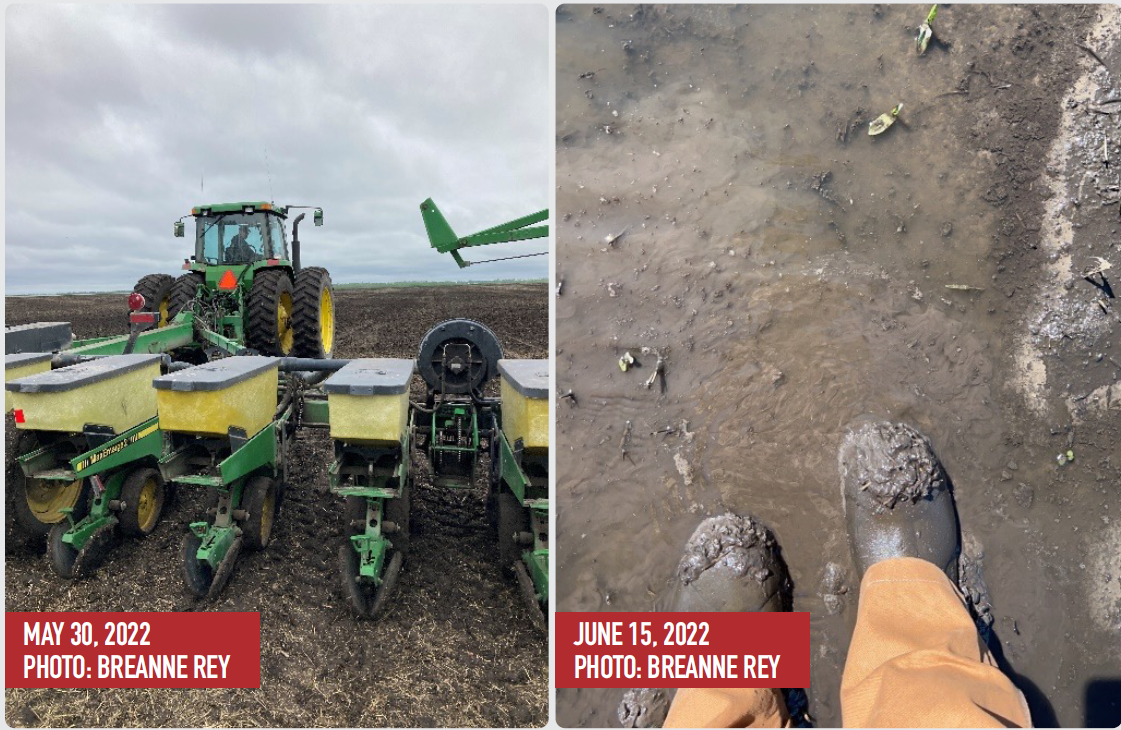
2. MID-SEASON HAIL
This agronomic issue seemed to have impacted a few different growing areas in Alberta – west of Ponoka, westof Innisfail, and Feedlot Alley area (Picture Butte, Iron Springs, etc.). The brutal part about these hail events is that they occurred 1-2 weeks before tassel emergence.
Hail reduces leaf surface area, makes the plant vulnerable to disease, bruises stalks and when severe can cause stalk breakage. In all these areas, the hail was severe enough to cause stalk breakage resulting in significant yield loss. When the hail damage causes damage to the tassel, even before it emerges, pollination is unable to occur.
HAIL STORM: JULY 18TH, 2022 - SEVERITY OF HAIL DAMAGE (DAY OF AND FOLLOWING DAYS)
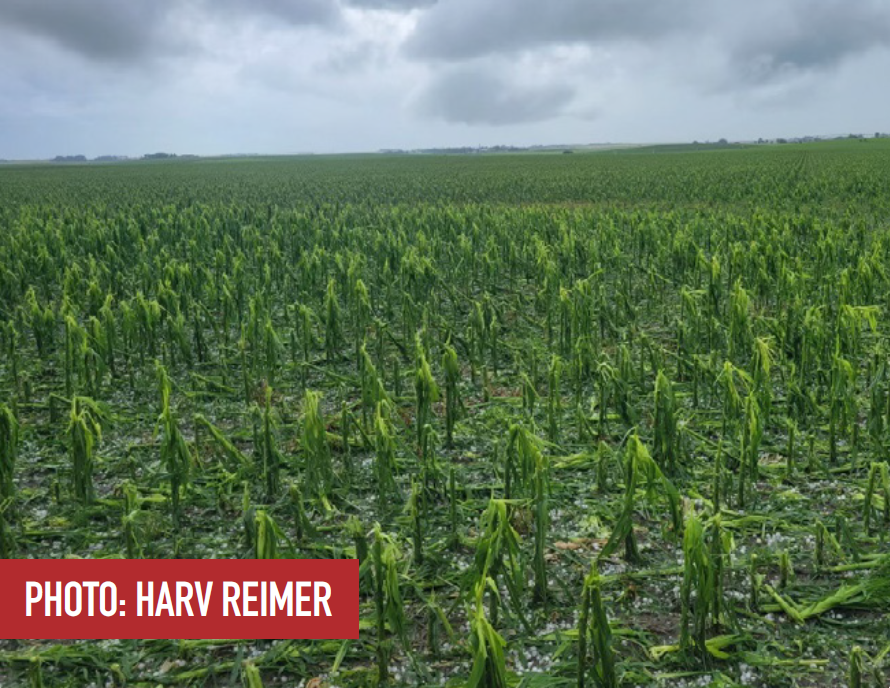
SAME FIELD IN IRON SPRING ALBERTA
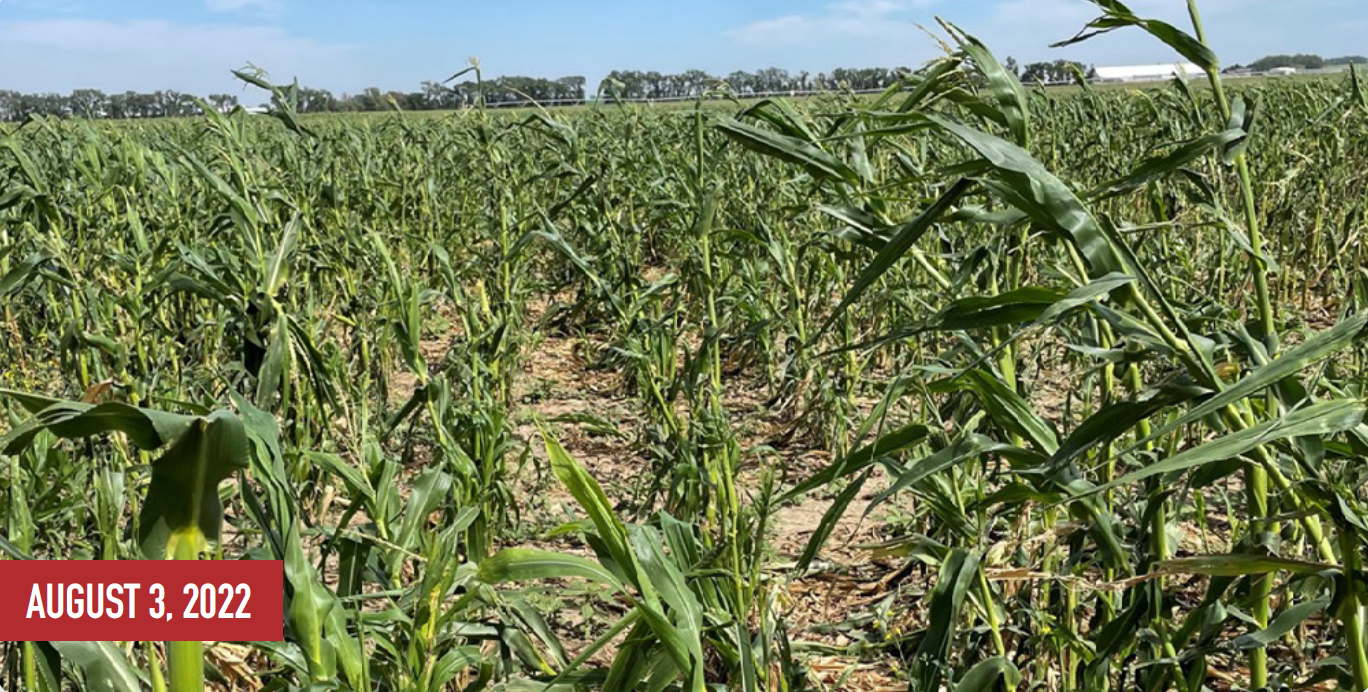
3. GREEN SNAP
This agronomic issue can be rather difficult to prevent. A grower can do everything right (planting depth, population, herbicide choices, etc.) and still have green snap appear in their field. Green snap in the cases saw during 2022 were a result of environmental growing conditions. The cool spring resulted in overall slowed plant growth, then when seasonal temperatures arrived, the plant grew more intensely than usual resulting in less structure to support the developing stalk. When high winds came, the stalk had less structural integrity resulting in it snapping. This phenomenon appeared to be more frequent in the outer rows of the field and got progressively better as we travelled deeper into the field.
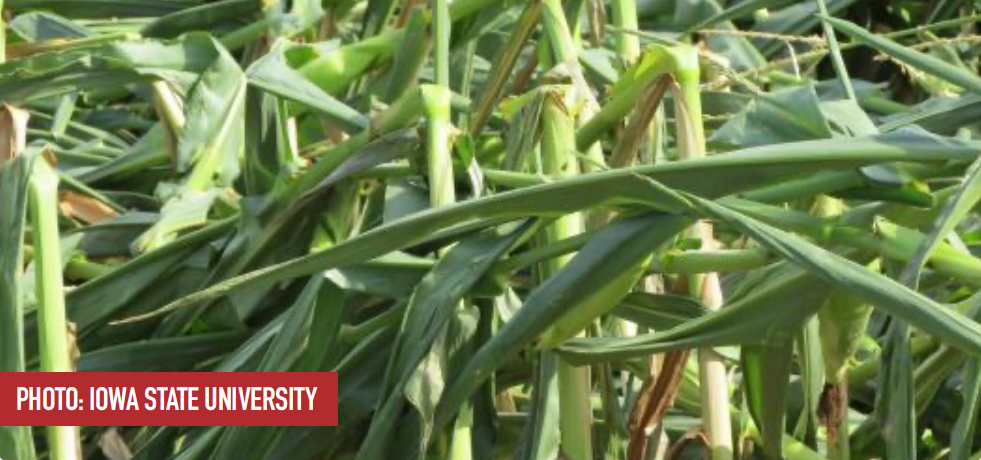
4. EUROPEAN CORN BORER (ECB)
This is not a new pest in Western Canadian corn fields and can do enough damage to impact yield and slow harvest efficiency (grain and silage corn). We can see ECB damage as early as pre-tassel but it tends to be more common after tasseling and during ear development. ECB larvae will bore into the stalks, ears, tassels, and ear shanks of corn plants. Signs of this pest include frass and feeding damage in the silks and upper portion of the corn ear, stalk lodging, and purpling of the top portion of the plant due to insect tunnelling ultimately resulting in death of a portion of the plant. Mature larvae are creamy white to pale grey with 2 pots per abdominal segment.
Planting a hybrid with above-ground insect protection (G2 hybrids from PRIDE Seeds) are a surefire way to protect your field against ECB. PRIDE Seeds is excited the launch 2 Silage Specific hybrids that have aboveground insect protection in addition to the silage specific traits you’ve become accustomed to. AS1018G2 EDF RIB and AS1028G2 EDF RIB are most comparable to AS1017RR EDF and AS1027RR EDF, respectively. These new products are sold out for this season but be sure to keep an eye on trial results and availability for next season.

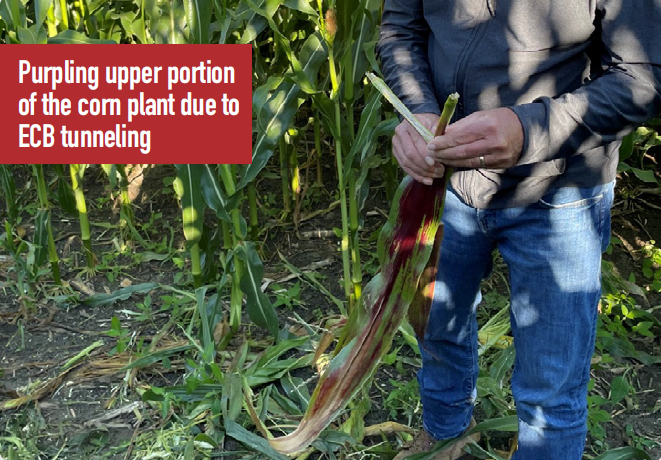
5. LOW TEST WEIGHT (GRAIN CORN)
After a trying spring, Mother Nature brought out the sunshine and cranked up the heat. This was critical for saving the hope of grain corn reaching physiological maturity in Manitoba and maximizing yield potential. Average test weight for grain corn is 56 lbs/ bu. This year, early and mid-season hybrids hit that 56 lbs/bu for the most part. However, the longer-season hybrids tended to come off the field a tad lighter than average due to delayed planting and an overall condensed season. On the bright side, these lower-than-average test weights were met with above-average yields.

We hope everyone had a chance to relax with family and friends over the Christmas holidays, and we are looking forward to what 2023 has in store for the Western Canadian grain corn, silage corn and grazing crop agronomically!

